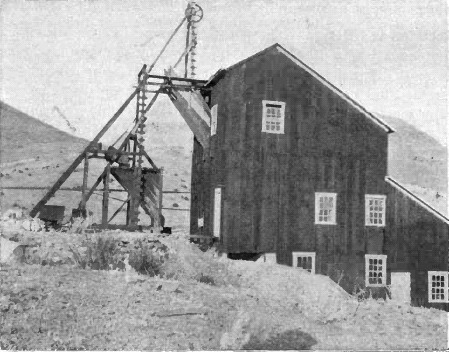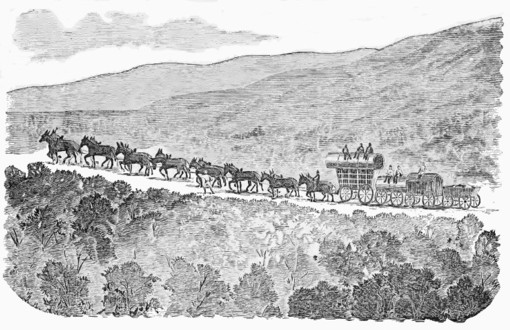Black sand, which is iron, often with some platinum and iridium, sometimes interferes with the result of a gold assay. Attwood recommends the following method as applicable to such a case: "Take 100 to 1000 grains and attack with aqua regia in a flask ; cool for about thirty minutes or more; dilute with water and filter. If gold is present, it will now be held in solution in the filtrate. Remove the filter and evaporate the filtrates to dryness; then add a little hydrochloric acid, evaporate and re-dissolve the dry salt in warm water ; add to the solution so formed proto-sulfate of iron ; which will throw down the gold in the form of a fine, dark precipitate. The precipitate is seldom fine, being mixed with oxides of iron, and must now be dried in the filter paper, and both burned over the lamp in a porcelain dish. Then mix the dried precipitate with three times its weight of lead; fuse, scorify and cupel. In case platinum, iridium, etc., are found associated with the gold, an extra amount of fine silver should be added before cupellation, and the gold button will be found pure."
In one of his reports the State Mineralogist of California gives a most lucid description of a mechanical assay of gold-bearing sands, stamped ore, etc., etc. He states: "It must be understood that this is only a working test. It does not give all the gold in the rock, as shown by a careful fire assay, but what is of equal importance to the mine-owner, mill-man, and practical miner, it gives what he can reasonably expect to save in a good quartz stamp mill. It is really milling on a small scale. It is generally very correct and reliable, if a quantity of material be sampled. The only operation which requires much skill is the washing, generally well understood by those who are most likely to avail themselves of the instructions. These rules apply equally to placer gravels.
Take a quantity of the ore the larger the better and break it into egg-sized pieces. Spread on a good floor, and with a shovel mix very thoroughly; then shovel into three piles, placing one shovelful upon each in succession until all is disposed of. Two of the piles may then be put into bags. The remaining pile is spread on the floor, mixed as before, and shovelled in the same manner into three piles. This is repeated according to the quantity sampled, until the last pile does not contain more than 30 pounds of ore. As the quantity on the floor becomes smaller, the lumps must be broken finer until at last they should not exceed one inch in diameter. The remainder is reduced by a hammer and iron ring to the size of peas. The whole 30 pounds is then spread out, and after careful mixing portions are lifted with a flat knife, taking up the fine dust with the larger fragments, until about 10 pounds have been gathered. This quantity is then ground down fine with the muller, and passed through a 40-mesh sieve. If the rock is rich, the last portion will be found to contain some free gold in flattened discs, which will not pass this sieve. These must be placed with the pulverized ore, and the whole thoroughly mixed, if the quantity is small, but if large must be treated separately, and the amount of gold allotted to the whole 10 pounds and noted when the final calculation is made. "From the thoroughly-mixed sample, two kilograms (2000 grams) must be carefully laid out.
This is placed in a pan or, better, in a batea, and carefully washed down until the gold begins to appear. Clean water is then used, and, when the pan and the small residue are cleaned, most of the water is poured off and a globule of pure mercury (which must be free from gold) is dropped in, a piece of cyanide of potassium being added with it. As the cyanide dissolves, a rotary motion is given the dish, best done by holding the arms stiff and moving the body. As the mercury rolls over and ploughs through the sand, under the influence of the cyanide it will collect together all the particles of free gold. When it is certain that all is collected, the mercury may be carefully transferred to a small porcelain cup or test tube, and boiled with strong nitric acid, which must be pure. When the mercury is all dissolved the acid is poured off, more nitric acid applied cold, and rejected, and the gold is then washed with distilled water and dried. "The object of washing with acid the second time is to remove any nitrate of mercury which might remain with the gold, and which is immediately precipitated if water is first used.
"The resulting gold is not pure, but has the composition of the natural alloy. Before accurate calculations of value are possible, the gold must be obtained pure and weighed carefully. To purify the gold it should be melted with silver, rolled out or hammered thin, boiled twice with nitric acid, washed, dried, and heated to redness. "The method of calculating this assay is simple. It will be observed that 2000 grams represent a ton of 2000 pounds; then each gram will be the equivalent of one pound avoirdupois, or one 2000th part of the whole, and the decimals of a gram to the decimals of a pound. Suppose the ore yielded by the assay just described, fine gold weighing .072 gram, it must be quite evident that a ton of the ore would yield the same decimal of one pound. Now one pound of gold is worth $301.46, and it is only necessary to multiply this value by the weight of gold obtained in grams and decimals to find the value of the gold in a ton of ore $301.46 x .072 $21.70. The cyanide solution should be kept rather weak, as gold is slightly soluble in strong solutions of cyanide of potassium. Cyanide is a deadly poison."
Touchstones are useful in deciding the probable value of gold alloys. Several pieces of the metal under examination are cut with a cold chisel, and the fresh edges drawn over the touchstone. These streaks are touched with nitric acid on a glass rod. Should no reaction follow, the gold is at least 640 fine. Wipe the stone with soft linen and try with test acid, made by mixing 98 parts of chemically pure nitric acid with two parts of hydrochloric acid, adding 25 parts distilled water by measure. If this has no effect, take
a touch needle marked 700, and make a similar streak on the stone samples. Compare, and, if necessary, continue with the other needles, using a higher number each time. An approximate estimate of the sample will soon be obtained. Should the gold seem poorer than 640 fine, try with the copper or silver needle. Practice and a good eye soon make this method very certain in its results. Retorted amalgam is likely to contain mercury. To test for it, put a small fragment into a closed glass tube, taking care that it falls quite to the bottom. Heat the gold over a spirit lamp, and a deposit of mercury will soon be seen upon the colder sides of the tube above the bottom. The tube may be broken and the mercury collected into a globule under water.
In mining regions gold dust passes as money, just as current as coin, according to what is supposed to be its value. Occasionally counterfeit dust is offered. The readiest means by which it may be detected are as follows: The dust from any one district is always much alike, and any unusual appearance should create suspicion. Try any doubtful pieces on a small anvil, remembering that gold is extremely malleable. Test some of the gold with nitric acid; effervescence or evolution of red fumes, or coloration of the acid prove impurities to be present. Place two watch-glasses (most useful in chemical tests) on paper; the one on a white sheet, the other on a black, and with a glass rod convey a few drops of nitric acid from 'the dish to each. To the glass on white paper add a drop or two of ammonia; a blue color would indicate copper. To the other add hydrochloric acid; should a white precipitate form, it proves silver. If no action is noticed, even after heating the dish, the dust is genuine. As "dust" is sometimes merely copper coated with gold, the better plan is to cut all the larger grains in two, so that the acid may attack the copper should it be present.
Continue on to:
Basic Field Tests For Gold and Various Other Metals
Return To:
Gold and Silver Prospecting Basics


